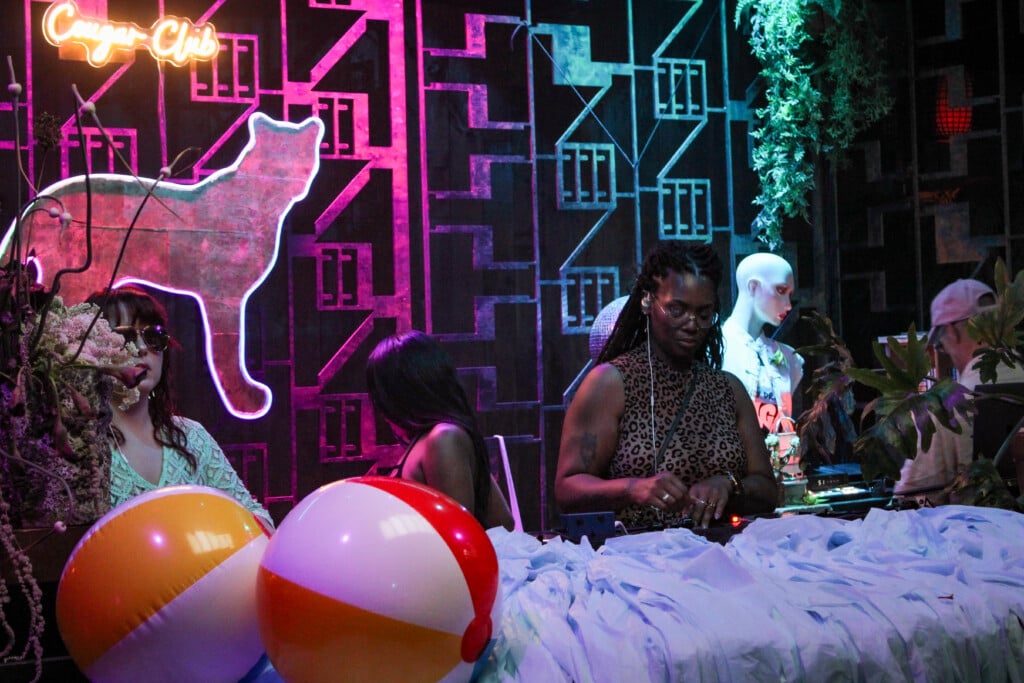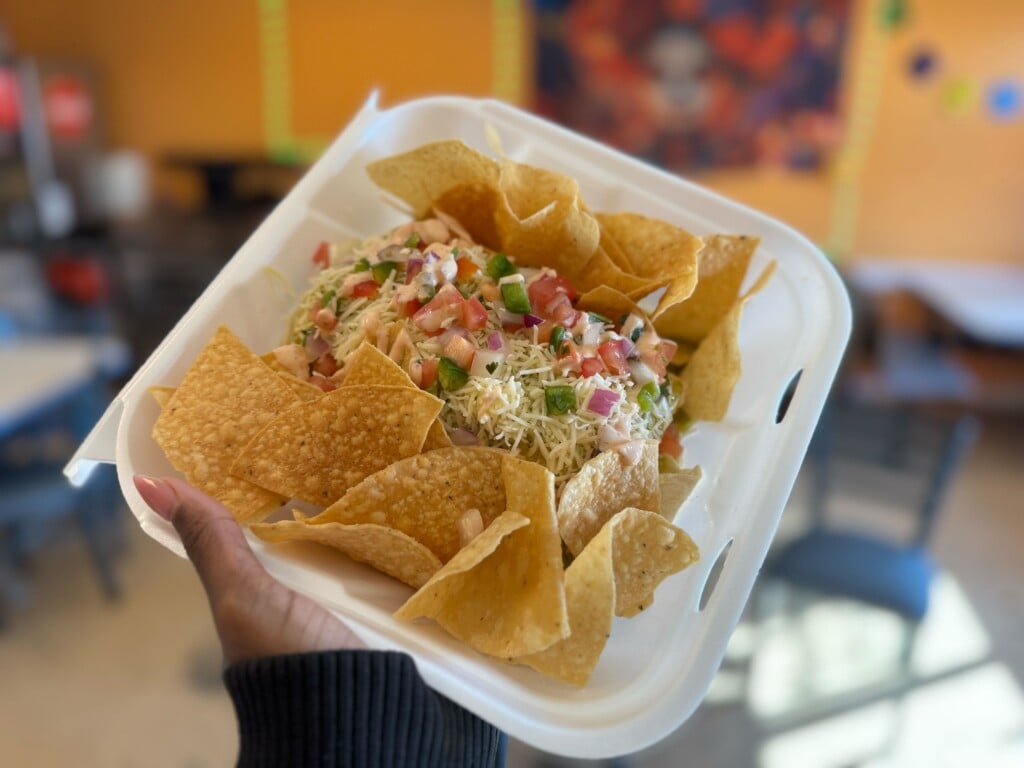Wendy Red Star poses haunting questions in Parading Culture at the Haw
Wendy Red Star gets the first laugh and the last in Parading Culture (Tokens, Gold, and Glory), her solo exhibition at Haw Contemporary. Her humorous, diorama-style “The Four Seasons” photographs make light of shrinking traditions and natural land by replacing key elements with cheap imitations. Red Star herself appears in the images, dressed in full Crow regarlia, surrounded by plastic flowers, inflatable wildlife and an obviously printed landscape of majestic mountains and big sky — ersatz versions of natural riches lost. The highly stylized aesthetic lends a pleasing array of color, texture and humor, but the kitschy imitations of her own culture strike a nerve, too. She’s poking out at us from inside her personal history, like
a display in a hushed museum threatening to heckle you from behind the glass. Sure, it’s funny. Quite properly, it’s also fucking depressing.
The tension between those feelings takes hold even before you enter the gallery, when you see a mini-gang of disassembled deer through the front windows, gold streamers pouring from their halved bodies like a slot-machine jackpot. Two in the corner share a vascular network: streamers coming out of their necks and spilling onto the floor in a vomity grotesque. Much about commercialized American Indian culture feels similarly dissected and regurgitated, blanded and blended for guilt-easing mass consumption — a slate of stereotypes that Red Star here effectively turns into provocative sculpture. In those glitzy plastic deer is a sinister message about gold, about the weight of history embedded in it. No other color implies so much value while connoting so much potential for ruin. Gold is power. Gold is gaudy. Gold is hoarded. Gold is pawned. Gold is an empty promise and a last resort. It’s tied up in the casino culture that entwines modern American Indian existence like a snake circling a rabbit.
In the modern reality Red Star shows us, using her native heritage as inspiration for biting commentary, what was wild and beautiful has become a joke, a gimmick, with our exposure to native culture limited to gift-shop ephemera or token symbology. Look at her pastel coyotes, standing on a stack of pallets — both draped in brilliant shawls — and see the price tags flash up from the colorful blankets. Notice the creases in the material, indicating a garment recently unpacked. The colorful shawls — sunset reds and oranges, juicy turquoise — lay over the coyotes’ backs, as if a huddled human has just shape-shifted to stand on four legs.
Therianthropic themes occur in Red Star’s photographs, too. Shawls stand on their own, as if starched, against pitch black. The shape in “bishxáapi – shoopá (4)” reveals neither animal fur nor human limb, but either is easy to infer. In “bishxáapi – dúupahpi (2),” a pile of blankets barely hides a stream of brown hair, the only suggestion that the shape underneath is human.
In another room, photographs of two women lounging in the shawls are altered by digital filters. Red Star has intervened against nature, inserting a tacky overlay on a tender moment. Iterations of the same photograph march around the walls of the room, this one with a barklike texture, that one with diffused neon outlining the shape of the women. Digital photography, a conveninence that removes user from material — from the substance of film — is a deceiver, one we’ve learned to accept. The women (mother and daughter? sisters?) face different directions, at the viewer and into the distance, as if anticipating that their moment of repose will be disturbed. It’s another witty trick. The repetitious use of Photoshop filters imitates the trial and error of the open market. (I like the graphite version.)
Images deteriorate up close, cracking the glass that separates illusion from reality. The magic of the image disappears, replaced by something lurid, emptied of value by a culture smothered in what was its homeland. What is genuine in this work? What parts of Red Star’s culture have been spared from commercialization? What does it mean that it’s commonplace to see non-native women wearing squash blossoms, tribal patterned leggings, feathers in their hair? When facsimile of American Indian culture is mainstream, when reproduction has subsumed authenticity, what remains are tropes. Red Star rounds up some of them in Parading Culture, showing us in the process that there’s still something glittering within.




